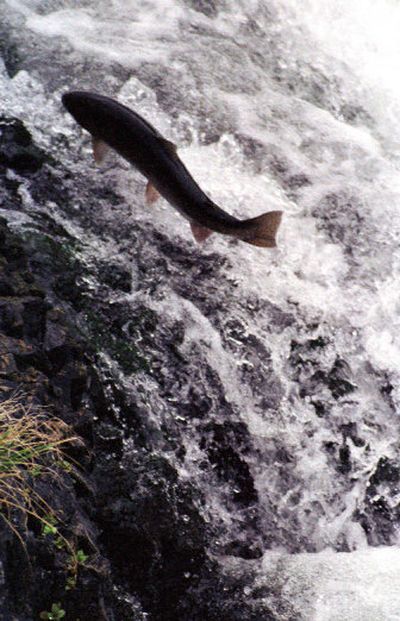U.S. agency will separate rainbow trout and steelhead

GRANTS PASS, Ore. – After once thinking rainbow trout and steelhead should be lumped together for endangered species listings, NOAA Fisheries is now going back to distinguishing between those that go to the ocean and those that stay in the river.
The federal agency that oversees efforts to restore the 10 groups of steelhead protected under the Endangered Species Act has formally proposed to adopt a different policy for designating populations for protection – one that is not based solely on genetics and the ability to breed together. The new policy would also take physical and behavioral differences into account.
The decision, if formally approved in December, would prevent a regulatory hassle of having to list healthy populations of rainbow trout as a threatened or endangered species along with struggling populations of steelhead in the same rivers, or make exceptions.
“Studies show rainbow trout fertilize steelhead eggs,” said Donna Darm, assistant regional director of the Northwest office of NOAA Fisheries. “But there are all these biological characteristics that make them different animals and subject them to different risks.”
Steelhead and rainbow trout are members of the same species, Oncorhyncus mykiss. However, steelhead migrate to the ocean for up to three years before returning to their native river to spawn, and rainbow trout just stay in the river. Unlike salmon, steelhead can survive to spawn more than once.
Environmentalists had feared that lumping the two together was a tactic to get steelhead in California, Oregon, Washington and Idaho off the threatened and endangered species lists, and were relieved by the latest turn of events.
“I think it was hard to go against their own scientists and people within their own agencies,” said Jeff Curtis of Trout Unlimited. “I think the sense is within those agencies that you need to preserve both anadramous and resident fish. You don’t want to lose a whole segment of the population.”
Ed Bowles, fisheries chief for the Oregon Department of Fish and Wildlife, said placing trout and steelhead together would have required some kind of waiver for healthy trout populations in cases like the Deschutes River in Oregon, where the steelhead are listed as threatened, while the trout are consistently abundant.
“The anadramous form of the species is very important,” Bowles said. “It’s important culturally and ecologically. Oregon would not be comfortable having only resident rainbows.
“The resident form can provide a kind of cushion to extinction risk, because they can continually produce some level of fish that go out to the ocean as youngsters and come back as steelhead.”
Also, studies show that steelhead and trout do not breed together in the Deschutes, though they do in other rivers, said Bill Bakke of the Native Fish Society.
Darm said the proposal to switch policies came down to the difference in two ways of delineating groups of a species under the Endangered Species Act. NOAA fisheries had been using the evolutionarily significant unit, which is based on whether the fish have a chance to breed with each other. Since rainbow trout and steelhead sometimes breed, under that definition they should be considered together.